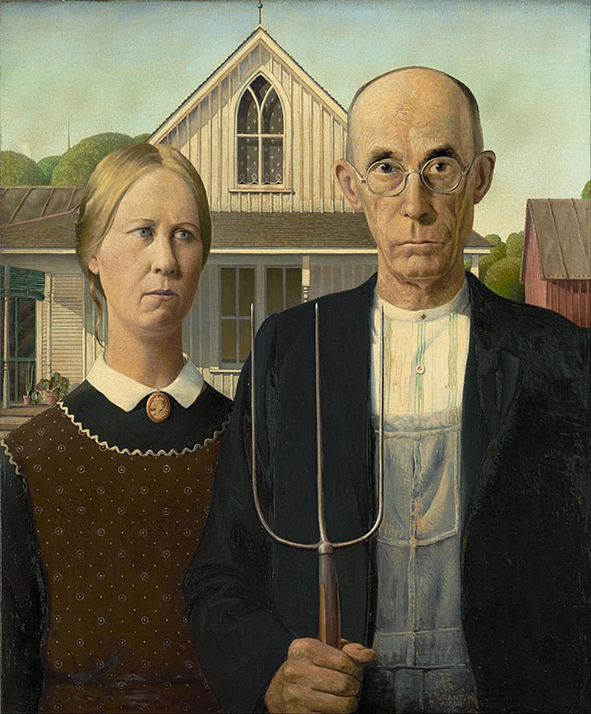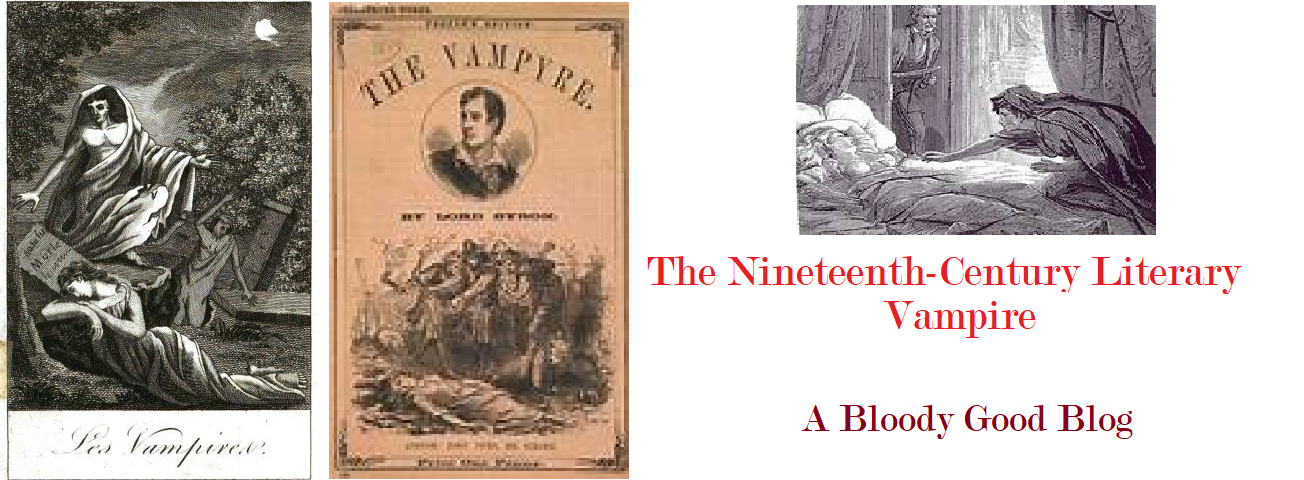
African American writers, filmmakers, and media artists are working in a genre known as African American Gothic. The genre of African American or Black Gothic is particularly important because it creates a space for African Americans, or those depicting Black or African American history and struggles, to share their experiences to a broader audience or with an audience of fellow African Americans–validating their experiences and creating an understood environment where they, African Americans, control their depictions of themselves, their experiences, and their history.
Although Derek Uriah d’Arcy’s novella The Black Vampire (1819) and Jordan Peele’s film Get Out (2017) were created centuries apart, they are (Peele) or can be read through (d’Arcy) the Black or African American Gothic genre. Both use traditional Gothic elements while incorporating Black or African American history. However, before delving into The Black Vampire, and Get Out I must clarify Gothic history and some of its literary elements.
Maisha L. Wester describes some traditional Gothic themes in her book African American Gothic: Screams from Shadowed Places. One key factor in traditional Gothic is the creation of monstrous others. Wester states, “In early gothic novels, such monstrous Others, served a useful critical and moral function…” (Wester 9). Meaning, the others represented some sort of moral function–who were these others? The “othered” characters in these works were individuals who were usually not white, not male, and not heterosexual–anything and anyone that white society deemed not socially acceptable or ideal. African American Gothic goes against this “othering” or at least uses it in a unique way. Writers who have contributed to African American or Black Gothic media actively rebelled against this monstrous other, by creating narratives with Black individuals as the lead and with the monstrous other being nonblack–white people. The horror that resides in African American Gothic media is a real horror that haunts African American and Black people. As Wester put it, “the monsters and ghosts that make up the texts (hi)story could intrude upon their lives in ways other gothic ghosts never could or would.” (Wester 6). Gothic literature and its usage of creative language and descriptions create a genre that can accurately depict the absurdity and horror of the Black and African American history.
In the film Get Out, Chris, the protagonist, is brought to an unfamiliar environment when his white girlfriend invites him home to meet her family. Although meeting your partner’s parents is already nerve-wracking, the tension and anxiety are heightened for Black audiences given the fact that Chris is Black, and his girlfriend is white. Jordan Peele adds to the anxieties Black audiences were already feeling throughout the film by making the interaction between Chris and Rose and her family as uncomfortable as possible. Peele uses typical Gothic elements like eerie and uncomfortable settings, whether that be Rose’s parents’ big house or the house’s isolation. The isolation and eeriness are heightened due to Chris being surrounded by white people. Beyond basic horror or Gothic elements, Get Out works because however outlandish or impossible the scenarios of the film may be, on the surface the anxiety and exploitation of Black bodies–the real horror of the film, is real. Historically Black people throughout the world are exploited, bodies used for pleasure, labor, and other things–Peele take on this exploitation in his creative interpretation of historical truth and his choice to portray the monstrous others in the film as Rose and her family. This constitutes Peele re-asserting control of perception of Black people. For instance “Get Out features sympathetic Black men getting preyed upon by white female sexuality” (Roth 206) instead of the other way around.
The Black Vampyre= by Uriah Derick d’Arcy also twists the concept of the monstrous other. Although the protagonist is an enslaved Black person who is killed by the man who has enslaved him and then turned into a vampire, the real “villain” or horror of the story is the institution of Slavery. While clearly the story uses mystical elements like a vampire, the horror of slavery and the conditions of slavery were very real. The Black Vampyre is particularly interesting because it takes something like the Haitian revolution and uses Gothic elements to sympathize with those enslaved at the time. Its creation is a creative way for d’Arcy to justify the national revolution and express the need for the revolution in the first place. D’Arcy took the historical Haitian Revolution, the first successful slave revolt, which scared enslavers everywhere into thinking similar revolts would happen on their lands, and changed the perspective. He gave the Black characters in his story grace and used the imagery and creativity of the Gothic writing style to express the need for and importance of the revolution.
Notable in both Get Out and The Black Vampyre are serious and dark issues that plague the Black and African American communities. As Jameela Dallis said in her essay about Love, “Gothic texts often deal explicitly with serious issues of the abuse, oppression, and marginalization of women and social minorities—the Gothic becomes necessary because it reflects the realities of those forced to suffer under the weight of its confining mansions and lecherous villains” (Dallis 125). Dallis also states that African American gothic often recovers or acknowledges African American history that was previously neglected or repressed (Dallis 128). This allows these serious issues of abuse and oppression to be talked about openly.
The Black experience is embedded with trauma, and although Black people are not defined by their trauma, or those who inflict it on them, the generational and current trauma they deal with affects them whether they want it to or not. A way trauma affects Black people is the way trauma is depicted. And as mentioned, African American or Black Gothic allows Black or African American people to create media that accurately and safely express some of the trauma they face. Wester pointed out in their book that a common theme in Gothic literature is “prolonged depictions of the heroine’s torments” (Wester 12). African American Gothic can simultaneously show the realities that Black people face while also not creating overly traumatic work for their Black audiences. Meaning, while topics of racial oppression and historic generational trauma are mentioned, there is no prolonged torment nor torture of Black characters that you often see in media not created by Black people that attempts to reflect Black life.
Wester also points out that in early Gothic texts acts of unwanted voyeurism or spying, usually done to women, are a common element. When adding in the concept of a monstrous Other and how the “othered” characters hold characteristics that are not accepted or deemed desirable, it is easy to see the perpetuated social ostracization and violence that impacted real-life people who happen to fit these “othered” characteristics. Traditional Gothic played on the previous paranoia, for the purpose of this essay, racial paranoia to further deepen dangerous and violent ideals.
Lastly, I would like to reflect on the final scene of Get Out. As Elaine Roth states, when Chris and Rose are outside, “Rose, in classic horror monster mode, survives being shot and reaches again for the gun…” (Roth 215) Chris is forced to attempt to kill or at least fight off his girlfriend Rose. He chokes her but eventually stops and leaves her there to die. However, just then the police lights show up and Chris is filled with anxiety and so is the audience. In the moment where Chris, just survived being attacked by Rose and her family, he now must worry about the police. He immediately freezes and Rose attempts to play the victim. However, as we learn, and to Chris and the viewer’s delight, it is Chris’s friend who came to save him. Peele once again plays on the anxiety of the viewers, but this anxiety would not be there, and this situation would not be as nerve-wracking, if Chris were white. This experience, or fear, of police brutality and the fear of being depicted as dangerous, is a uniquely Black fear. It that has a significant history that Peele deliberately chose to include.
In the ending of Get Out, as well as the entire film, Peele uses specific African American experiences to depict their overall reality. The Black Vampyre and Get Out, created at different times and depicting different situations, use the Black or African American experience to create Gothic horror that tells Black or African American history in a more sympathetic and real way. Both help African Americans to control their own narratives and public perceptions of Black and African American people and history.
Works Cited
Dallis, Jameela. “Love: Toni Morrison’s African American Gothic,” ed. Kelly L. Reames and Linda Wagner-Martin, 123-154. The Bloomsbury Handbook to Toni Morrison. London: Bloomsbury, 2023.
Get Out, dir. Jordan Peele, Universal Pictures, 2017.
Roth, Elaine. “This Is America: Race, Gender and the Gothic in Get Out (2017).” Gothic Film: An Edinburgh Companion, ed. Richard J. Hand and Jay McRoy, 206-17. Edinburgh: Edinburgh University Press, 2020. JSTOR, http://www.jstor.org/stable/10.3366/j.ctv10kmdxf.19. Accessed 15 July 2023.
Wester, Maisha. African American Gothic Screams from Shadowed Places. London: Palgrave Macmillan, 2012.
